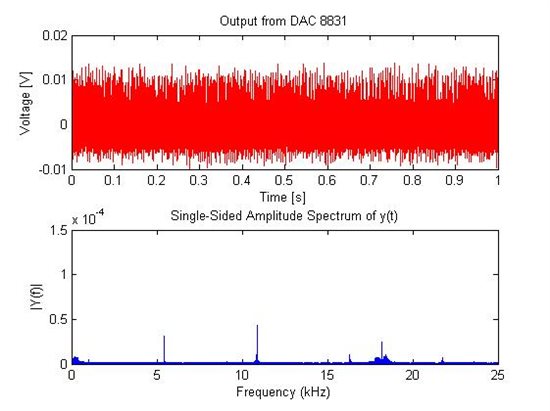hello,
I am using the DAC 8831 and observed that the output is noisy. I searched around and learned that DACs have a noise floor. I was expecting that the noise would be above a certain frequency and I would just be able to filter that out, but it seems to be present at all frequencies.
So I did an experiment to try to quantify this noise. I took the example code from Tom in SLA246, and set the two lines where the data is sent out as follows
...
MCBSP_write(hMcbsp0, 0x8000); // 5-6K McBSPb Header
...
MCBSP_write(hMcbsp1, 0x8000);// 5-6K McBSPa Header
so the output should be zero. Then I recorded the DAC output using a National Instruments DAQ at 1M samples per second. I got the following output and corresponding FFT
So the DAC seems to add a noise signal that is between +-10mV. Since I want to be able to generate signals in the 20kHz range and since the magnitude of variation in these signals is small, this noise is a problem.
Is there any way around this? Low pass filtering can be tried but that would restrict the max frequency that can be generated by the DAC.
I am using this DAC with C6713 DSK + 5-9K interface board.
Best regards,
Umar Khan.


